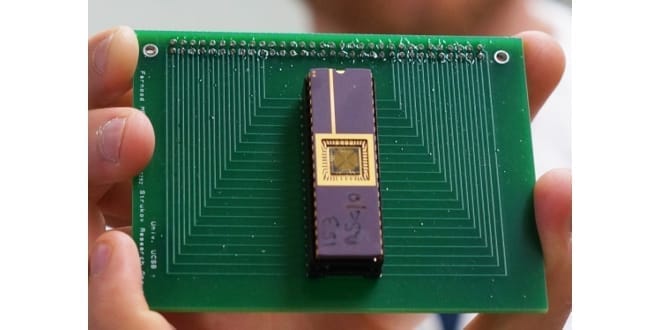Researchers in the Department of Electrical and Computer Engineering at the UC Santa Barabara have made a breakthrough in artificial intelligence. They've created a chip that more closely mimics the function of a human brain than any other hardware out there. The key to this breakthrough is an electronic component called a memristor.
A memristor is a resistor which has a variable resistance. The amount of resistance is dependent on how much current has passed through it in the past. It offers a form of non-volatile analog memory. Although the theoretical basis for memristors goes back to the 70s, it's only been a few years since the first functioning memristors have been created. Even now, the only existing memristor chips have been experimental, and this new technology has yet to see usage in commercial applications.
Neural networks inspired by the human brain have a long history in the field of Artificial intelligence. They are superior to other AI techniques at things like pattern recognition. They work similar to the way a human brain learns a skill, as performing a task over and over again makes the connection between the associated neurons stronger. In the same way, an artificial neural network can be given training data to strengthen the appropriate connections so it can recognize similar patterns in the future.
The problem is that the transistor-based hardware is not very similar to the way a human brain functions. It requires numerous transistors to perform the job that could be done by one memristor. These memristor-based chips will be far more efficient than transistor-based ones at any task that neural networks are good at. Just as you have a GPU which specializes in operations related to graphics, it's easy to imagine a device that has a dedicated neural network chip which performs its specialized task as part of a greater whole.
The chip created by the USCB team was trained to identify the letters "z", "v", and "n". It succeeded at identifying them when presented with images of those letters which had noise and distortions. Although this may not seem like an incredibly big accomplishment, the team considers this a good proof of concept. The chip accomplished its task with an array of only about 100 memristors. Now that they know the technology works, they can easily scale it up to create larger networks which are necessary to deal with more complex tasks.
Do you think this chip will lead to improvements in artificial intelligence? Leave your comment below.







